John David Washington‘s Protagonist in Tenet is assured that the threat to our world is something far worse than nuclear Armageddon. If the enemy succeeds in inverting entropy on a global scale, it would lead not just to a catastrophic loss of life, but the outright erasure of it. As the world starts moving backwards through time, our lives would be undone, as if they never happened. Can you imagine?
No, seriously, can you imagine it? What would something like that look like? What would it feel like? Would it hurt? Would we even know it’s happening? Christopher Nolan‘s brand of sci-fi, like his filmmaking, has strived to adhere to real, tangible science whenever possible. The making of Interstellar famously led to breakthroughs in real-life astrophysics regarding black holes, thanks to the simulation created for the film.
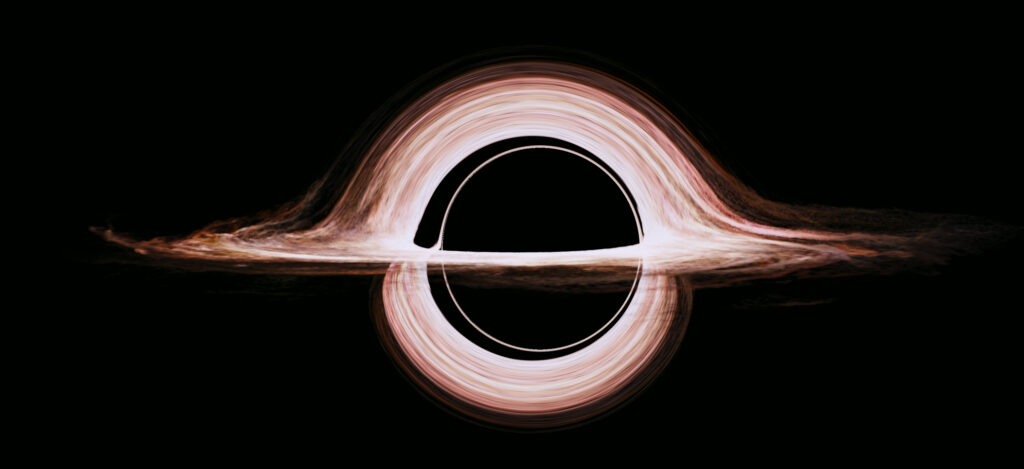
Unlike the jaw-dropping sight of Interstellar‘s black hole however, the science of Tenet is frustratingly opaque. Not because it’s difficult to understand – that’s a different can of worms – but because of how it’s communicated visually. Or, to be more precise, how it isn’t.
In the climactic final battle, our heroes race against the clock to stop the end of the world… as you do. We know the world will ‘end’ if they don’t succeed, but we have no idea how it would play out. The stakes are abstract, elusive, and impersonal.
Now compare this to the doomsday scenario of another sci-fi blockbuster, Terminator 2‘s eponymous Judgement Day. Judgement Day combines two of the most popular end-of-the-world scenarios in science fiction: artificial intelligence rising up against humanity, and a nuclear apocalypse. The latter is such a staple of global destruction plots that even in Tenet, it serves as the baseline of comparison.
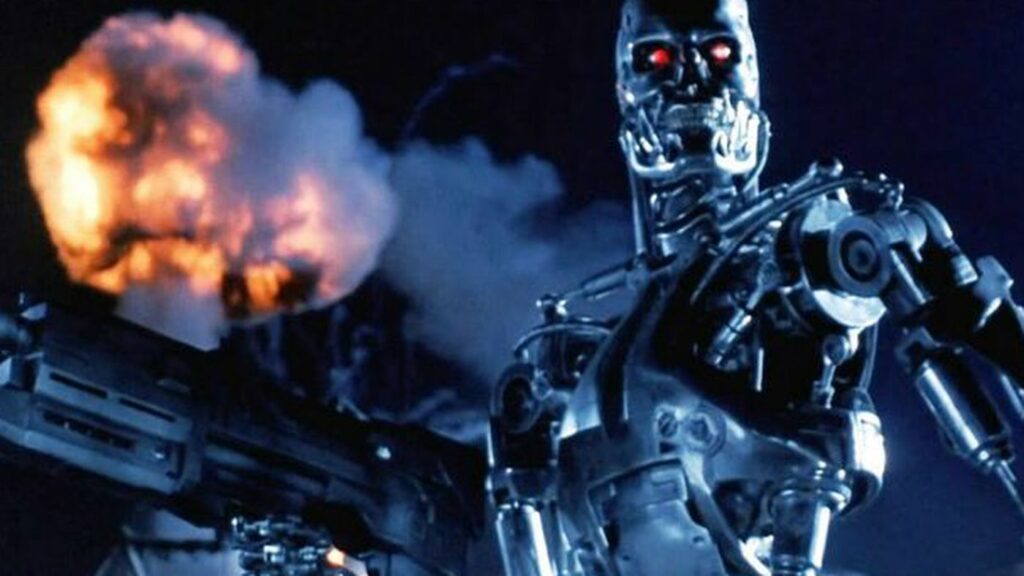
In the real world, humanity came so close to global thermonuclear war that the looming threat of it is permanently etched into our collective consciousness. Everybody has at least some idea of what a nuclear blast looks like, as well as the devastation that comes with it. If your blockbuster stakes are nuclear Armageddon, you could very easily get away with not giving us a preview – we already know what to expect.
Terminator 2 however, still opts to give us a preview of Judgement Day, and it’s one that you’re unlikely to ever forget. Linda Hamilton‘s Sarah Connor has a recurring nightmare. In it, she’s outside the fence of a children’s playground, watching kids play with their families. Sarah knows the missiles are coming. She tries to warn the people on the other side. She tugs at the fence in desperation, yelling and pleading, but no one is paying attention. Then the nuke hits the city in the distance. Moments later, the idyllic playground erupts in flames. Sarah, still holding on to the fence, screams as the heat melts her skin. Then the blast wave rips through the flaming hellscape and her skeleton is blown to dust, along with everything else.
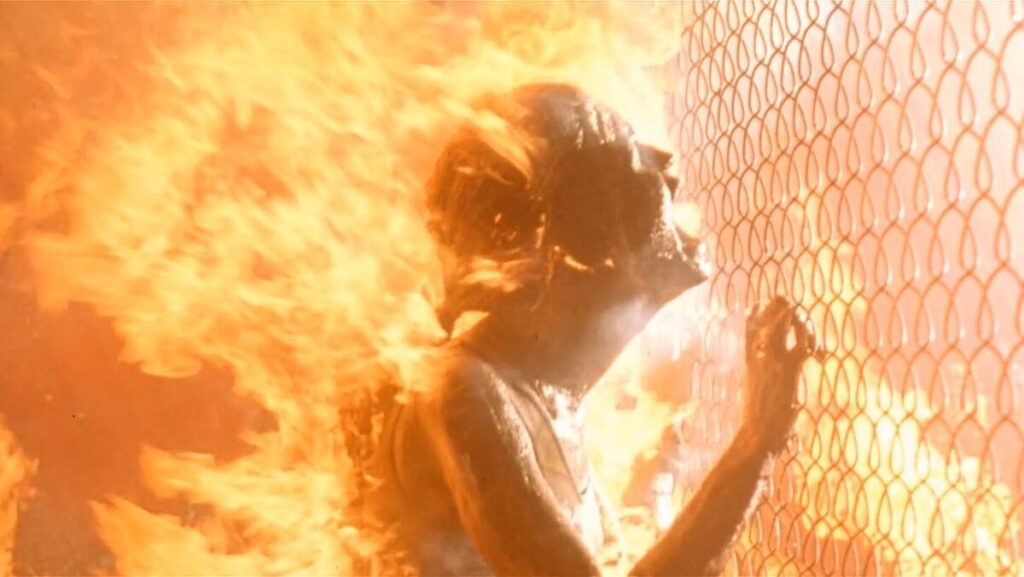
The burning playground is also front and centre in the film’s opening credits. This nightmare not only establishes the movie’s apocalyptic stakes, but it serves to inform character intent. Sarah is haunted and traumatised by the knowledge that Judgement Day is coming. The helplessness that defines her nightmare is what drives her character. She denies her son John the playground childhood that the kids in her dream have. She has to raise a warrior who’s ready for what the future holds. She has to prevent Judgement Day, saving billions of lives and regaining control of her own life and destiny in the process. “No fate but what we make for ourselves” is her motto, and she believes it because she has to.
Compare this to the lacklustre emotional stakes of Tenet, which are embodied by Elizabeth Debicki‘s Kat. When we first hear of the bad guys’ plot to invert entropy on Earth, causing humanity to cease to exist, Kat chimes in with “including my son” – a stilted, awkward reminder of the story’s attempt to shoehorn in some personal stakes. What makes it even worse is the fact that her son is the most hilariously faceless, cardboard cut-out version of a child in a Christopher Nolan movie to date.
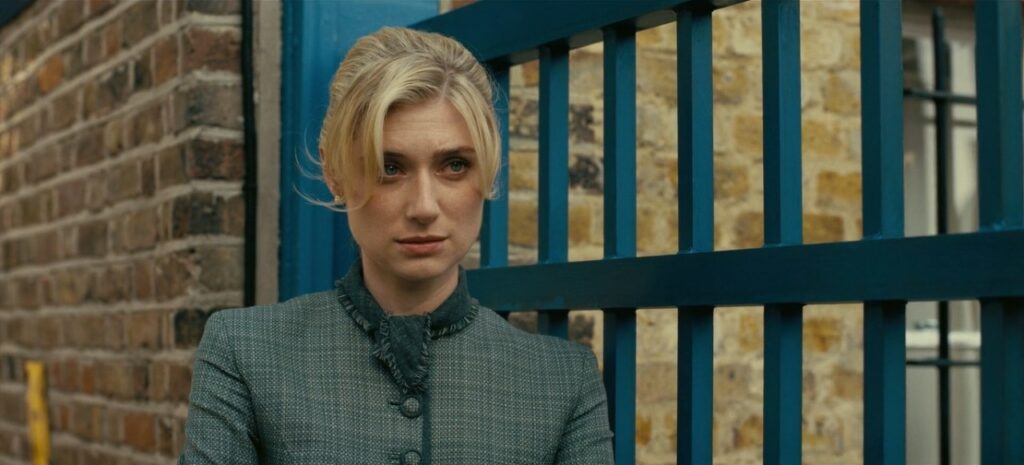
Where Terminator 2 is a masterclass in intertwining the big picture end-of-the-world stuff with personal character motivation, Tenet stumbles. Even if the kid in Tenet had a face or was memorable in any way, Kat’s remark would have still made her seem somewhat foolish, selfish, or insensitive. Yes dear, if everyone stops existing, so will your son. That is how this works.
Where Terminator 2 shows a clear, visually striking, and haunting depiction of what its end of the world looks like, Tenet is vague and non-descriptive. Hell, we even know what the aftermath of Judgement Day looks like – piles of human skulls as far as the eye can see, crunched to dust beneath the metal heels of merciless killing machines.
And to be fair, Tenet has its fair share of visually striking moments. The way it plays around with its inverted timelines, especially in the climax, is full of creative, mind-bending spectacle unlike anything we’ve seen – which is why its abstract, out-of-reach doomsday is even more of a let-down. A world undone by time could have been its own proper source of nightmare fuel. A surreal reverse time-lapse, as disturbing and dread-inducing as it would be captivating. The Protagonist, moments away from victory, seeing it slip away as the flow of time is reversed, only to wake up in a cold sweat. There are many options here.
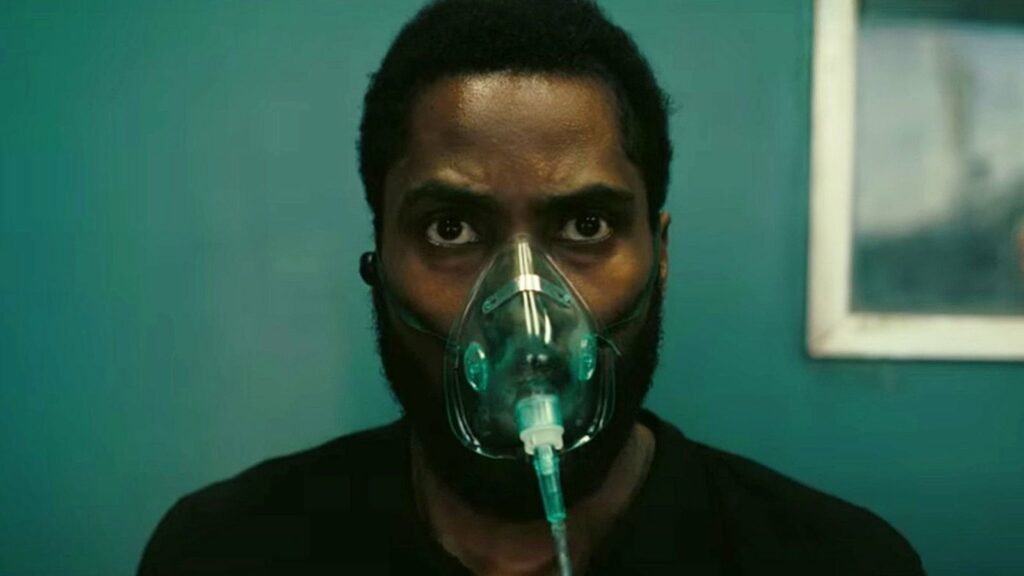
Beyond it being a missed opportunity for further provocative visual spectacle, a proper, well-defined world-ending threat could have heightened the tension and raised the stakes. It could have made the characters more compelling, and have the audience actively root for Tenet‘s heroes rather than watch on with detached curiosity.
Bottom line, if you’re going to end the world? Go big. Especially if you’re a director that so fiercely advocates for the big-screen theatrical experience.
P.S. In Tenet, why would the cars drive backward? Isn’t it just the drivers that are reversed? Huh, I guess you could say that really drives me crazy.
